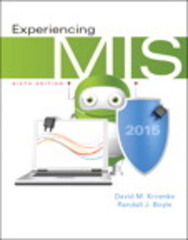Question
Employee retention is critical to any organization's long-term success and sustainability. The ability to retain talent after hire is influenced by myriad interrelated factors, among
Employee retention is critical to any organization's long-term success and sustainability. The ability to retain talent after hire is influenced by myriad interrelated factors, among which organizational processes, proper training, and job satisfaction stand out as the most significant. Organizational processes encompass the structures, systems, and practices that define how work is conducted within a company. These processes can either facilitate a supportive work environment or create disengagement. A clear and positive organizational process, such as a transparent communication system, can enhance employees' sense of belonging and alignment with the company's objectives (Allen et al., 2010). Furthermore, efficient processes can reduce job stress, a significant predictor of turnover intentions (Karatepe, 2013). When employees perceive that the organization's processes are fair and equitable and enable them to perform at their best, they are more likely to develop an emotional attachment to the company, reducing the likelihood of voluntary turnover (Zhenjing et al., 2022).
Proper training is another critical determinant of employee retention. Effective training programs equip employees with the necessary skills and knowledge to perform their jobs competently, enhancing their confidence and job satisfaction (Blanchard & Thacker, 2013). Offering training opportunities is a way to show employees that the organization is committed to their personal and professional development. This can build loyalty and foster a sense of dedication among employees.
Job satisfaction directly influences employee retention and is deeply intertwined with organizational processes and training. Job satisfaction is derived from various factors, including the nature of the work, compensation, growth opportunities, and the quality of supervision (Alrawahi et al., 2020). When employees find their work meaningful, are compensated fairly, have opportunities for advancement, and receive supportive supervision, they are more likely to experience high levels of job satisfaction, which is inversely related to turnover intentions (Meyer & Schneider, 2021). Organizations that prioritize job satisfaction through well-designed roles, competitive pay, career development pathways, and supportive leadership are more successful at retaining their workforce (Kosaka & Sato, 2020).
LEARNING RESOURCES
Required Readings
Allman, V., Conchie, B., & Hadd, J. (2006, February 9). Start finding tomorrow's leaders now.Links to an external site. Gallup Management Journal Online, 1-8.
Armstrong, C., Flood, P. C., Guthrie, J. P., Liu, W., MacCurtain, S., & Mkamwa, T. (2010). The impact of diversity and equality management on firm performance: Beyond high performance work systems.Links to an external site. Human Resource Management, 49(6), 977-998. https://doi.org/10.1002/hrm.20391
Divol, R., & Fleming, T. (2012). The evolution of work: One company's story.Links to an external site. McKinsey Quarterly, (4), 111-115.
Dobbs, R., Lund, S., & Madgavkar, A. (2012). Talent tensions ahead: A CEO briefing.Links to an external site. McKinsey Quarterly, (4), 92-102.
Dwoskin, L. B., Squire, M. B., & Patullo, J. E. (2013). Welcome aboard! How to hire the right way.Links to an external site. Employee Relations Law Journal, 38(4), 28-63.
Grler, A., & Zock, A. (2010). Supporting long-term workforce planning with a dynamic aging chain model: A case study from the service industry.Links to an external site. Human Resource Management, 49(5), 829-848. https://doi.org/10.1002/hrm.20382
Ilmakunnas, P., & Ilmakunnas, S. (2011). Diversity at the workplace: Whom does it benefit?Links to an external site. De Economist, 159(2), 223-255. https://doi.org/10.1007/s10645-011-9161-x
Lund, S., Manyika, J., & Ramaswamy, S. (2012). Preparing for a new era of knowledge workLinks to an external site.. McKinsey Quarterly, (4), 103-110.
Murray, L. M., & Fischer, A. K. (2010). Strategic recruiting: A human resource management case studyLinks to an external site.. Journal of Business Case Studies, 6(6), 97-102.
OASIS. (n.d.).APA presentation template.Links to an external site.Walden University. https://academicguides.waldenu.edu/writingcenter/templates/general#s-lg-box-20293636
OASIS. (n.d.).Common course assignments: Annotated bibliographies.Links to an external site.Walden University. http://academicguides.waldenu.edu/writingcenter/assignments/annotatedbibliographies
- Pieterse, A. N., Van Knippenberg, D., & Van Dierendonck, D. (2013). Cultural diversity and team performance: The role of team member goal orientation. Links to an external site.Academy of Management Journal, 56(3), 782-804. https://doi.org/10.5465/amj.2010.0992
- Purdue University Online Writing Lab. (2011).Designing an effective PowerPoint: Quick guideLinks to an external site.[PowerPoint slides]. https://owl.purdue.edu/owl/general_writing/visual_rhetoric/designing_effective_powerpoint_presentations/index.html
- Purdue University Online Writing Lab. (2016).Peer review presentation.Links to an external site. https://owl.purdue.edu/owl/teacher_and_tutor_resources/teaching_resources/documents/20071107114250_712.ppt
The fundamental values that drive HR policy at Procter & Gamble: Key role of integrity, trust and respect for others.Links to an external site. (2011). Human Resource Management International Digest, 19(3), 10-14. https://doi.org/10.1108/09670731111125862
All course members (Presenters and Participants) should respond to colleagues' postings by addressing the following summative considerations that pertain specifically to the topics for this 2-week unit:
- In what ways do the readings provided in this 2-week unit's Learning Resources and those identified by you and your colleagues answer important "so what?" questions in the field of human resources?
- How are these readings potentially valuable to research in the field?
- Are there any important gaps (i.e., contradictions, arguments, disagreements, or areas of divergence) within this set of readings that point to potential topics for future research?
- How would you follow up to extend or explore these gaps?
Step by Step Solution
There are 3 Steps involved in it
Step: 1

Get Instant Access to Expert-Tailored Solutions
See step-by-step solutions with expert insights and AI powered tools for academic success
Step: 2

Step: 3

Ace Your Homework with AI
Get the answers you need in no time with our AI-driven, step-by-step assistance
Get Started


